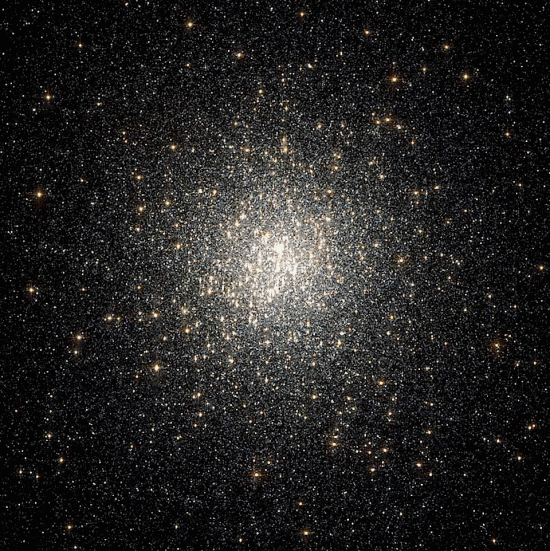
Globular star cluster NGC 2808. Credit: NASA/Hubble Space Telescope.
Feb 17, 2012
In an Electric Universe, plasma structures in space exhibit similar morphology regardless of scale. From galaxy clusters to individual stars, spheres and filaments predominate.
Spherical clusters of stars, otherwise known as globular clusters, are another example of how plasma is organized and confined into coherent formations that defy conventional explanations. Astronomers have long thought that globular clusters must begin as a uniform assemblage of stars from a single birthing event, since, according to standard theory, the gas and dust needed for new stars is no longer present within them.
However, as a recent press release states, some confusion has arisen because one of the Milky Way’s largest globular clusters, NGC 2808, contains “multigenerational” stars. As Giampaolo Piotto of the University of Padua stated, “This result says globular cluster stars are not as simple as we are teaching to our students.”
Globular clusters pose a particularly difficult question when a gravitational model of the cosmos is considered. Why do their stars congregate into giant balls, rather than in disks or ellipses? Also, stellar orbits inside the clusters should gradually cause them to disappear over time if their stars are attracted to one another through gravity alone. Some stars should be accelerated out of the cluster, while stars closer to the center should slide into the gravity well.
As has been noted in a previous Picture of the Day, because globular clusters orbit galaxies in a halo, each time they cross the galactic plane tidal forces should disrupt the clusters, sending their stars every which way. Why this does not happen is not explained. NGC 2808 is supposed to be hundreds of millions of years old, yet it remains spherical despite crossing the plane of the Milky Way many times.
The Electric Universe view of stars provides an answer to that quandary. Since stars are positively charged objects bound together by electric and magnetic fields, their interaction with each other is not based on a gravito-centric model of the Universe, alone.
As Dr. Donald Scott, retired Professor of Electrical Engineering and advocate of the electric star model stresses, it is the strength of the electric charges flowing into a star that determines its characteristics. The old-fashioned Nebular Hypothesis has been found wanting when it comes to analyzing a star’s behavior in galactic formations or globular clusters. Therefore, populations of stars are not dependent on how long it took them to evolve, so the “problem” with multigenerational stars in NGC 2808 does not follow.
Electrically, individual stars might be considered as discrete charged particles in both structures, behaving according to the laws of plasma physics and not the laws of mechanical motion. Galactic disks act like Faraday motors, while globular clusters (as has been suggested in the past) might be more like ball lightning than anything else.
So, the Hubble research team has not discovered anything extraordinary. The stars in NGC 2808 are acting in accord with their electrical natures. They may not be as old as the team thinks because they are not behaving according to gravity in a big bang cosmology but according to a plasma cosmology hypothesis.
Stephen Smith












